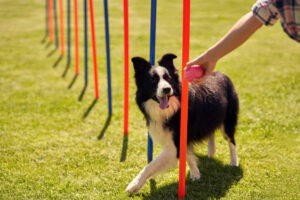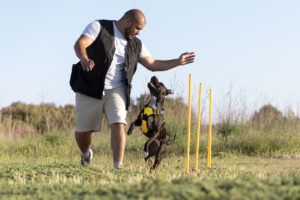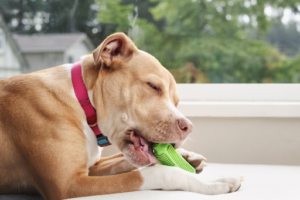A healthy dog weight is the optimal body weight for your dog or the weight range for an adult dog based on breed and metabolism. However, determining the appropriate weight is challenging since each dog breed varies in form, size, and structure.
Finding and maintaining your dog’s appropriate weight can dramatically increase the life of your companion. Dogs fed in excellent bodily condition outlived their overweight littermates by 1.8 years.
In this article, we’ll answer the question, “How heavy should my dog be?”
Overweight Health Issues in Dogs
Before we get into how you can assist your dog in staying healthy, it’s vital to understand the dangers of being overweight or obese.
Shorter Life Expectancy
An obese dog’s lifetime is reduced by two years on average when compared to a healthy-weight canine.
Tumors
Obesity may raise the risk of some malignancies, including benign fatty tumors (lipomas), breast cancer, and bladder cancer (transitional cell carcinoma).
Breathing conditions
Obesity can lead to heart disease and excessive blood pressure. It has also been connected to respiratory issues.
Overweight dogs are more prone to tracheal collapse and laryngeal paralysis. If left untreated, these airway disorders can progress to a respiratory crisis, which can be deadly.
Underweight Health Issues in Dogs
Underweight dogs, like underweight humans, can develop potentially dangerous health concerns.
If your dog or cat is underweight, their bodies aren’t obtaining enough nutrition to get them through the day. This can have a negative impact on quality of life, such as being always chilly, and can lead to more serious difficulties, such as an increased risk of diabetes or heart disease.
Calculate Your Ideal Dog Weight
There are multiple ways to know what your dog’s ideal weight should be, but the most common one is the BCS.
Body Condition Score (BSC)
The Body Condition Score is a common technique for estimating the amount of body fat. Canine BCS is often assessed on a 9-point scale, with canines scoring in the center of the scale (a 4 or 5 out of 9) having a healthy body condition.
BCS is assessed by seeing and, more significantly, tactilely inspecting the ribs, belly, and waistline.
Target Weight
After getting your dog’s BCS, the next goal is to find out what weight he or she should be at. You may use your dog’s BCS to determine its optimal weight now that you know it.
Dogs who are within their optimal healthy weight range have perceptible ribs, a modest abdominal tuck, and a waistline curvature.
Overweight dogs have fat layers across their ribs and lack the abdominal tuck and waist curvature. Underweight dogs have visible ribs and vertebrae, as well as a deeper waist and abdominal curvature.
Talk With Your Veterinarian
You can also ask your veterinarian, “How heavy should my dog be?”
Your veterinarian is the best resource to recommend a target weight for your pup since factors such as age, breed, and activity level affect it. They also provide you with advice on the best diet and exercise program to help your dog achieve their ideal weight.
For instance, your dog can try fetch, agility exercises, and more.
How Heavy Should My Dog Be?
Knowing your dog’s optimum body weight can help you plan a successful weight reduction program, or it can tell you what your pet should weigh if he or she is underweight or losing weight for no apparent reason.
Make sure you exercise your dog on a regular basis to keep him in good shape!
For more tips and tricks, check out our PetFitness blog!







